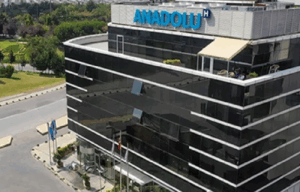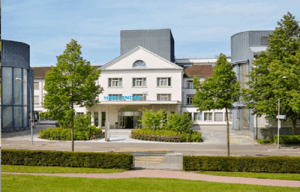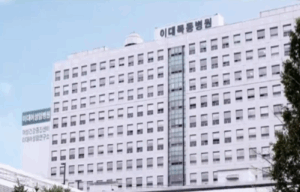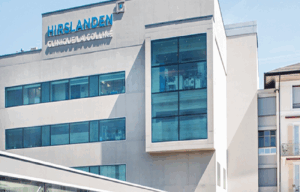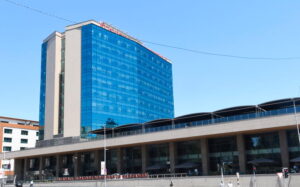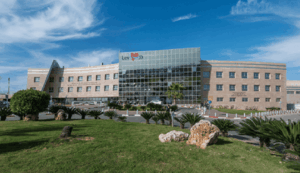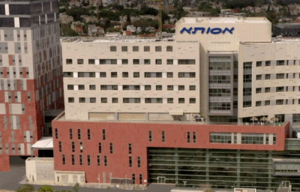Chemotherapy
Chemotherapy is a conservative treatment method that uses special medications, known as chemotherapeutic agents, to destroy cancer cells. These agents target rapidly dividing cells in the body, which include malignant tumors. Chemotherapy may be used as a standalone treatment or in combination with other methods, such as surgery or radiation therapy.
Advantages of chemotherapy
- Destruction of cancer cells: Chemotherapy aims to destroy or slow the growth of cancer cells, which can lead to tumor reduction or even complete cancer remission.
- Systemic effect: Chemotherapeutic medications are distributed throughout the entire body, allowing for the destruction of cancer cells even in the most remote areas.
- Combination with other therapies: Chemotherapy is frequently used alongside other treatment methods, enhancing the overall effectiveness of the therapy.
- Individualized approach: The doctor can select a personalized chemotherapy regimen based on the characteristics of the disease and the patient’s condition.
Indications for chemotherapy
Chemotherapy is used in the treatment of many types of cancer, including:
Breast cancer: Administered either after surgery to eliminate remaining cancer cells or before surgery to reduce tumor size.
Lung cancer: Often used in combination with radiation therapy or surgery to improve treatment outcomes.
Gastric and colorectal cancer: Used to reduce tumor size prior to surgery or to prevent recurrence following surgery.
Blood cancer (Leukemia): This is the primary method of treatment, as cancer cells are found in the blood and bone marrow.
Ovarian cancer: Applied at both early and advanced stages, frequently in combination with surgery.
The effectiveness of chemotherapy depends on the type and stage of cancer. For example, in breast cancer, a combination of chemotherapy and surgery increases the five-year survival rate by 20—30%. In children with acute lymphoblastic leukemia, full recovery is achieved in 85% of cases following a course of chemotherapy.
How is chemotherapy performed?
Preparation: Before treatment begins, a thorough medical examination is conducted to determine the optimal chemotherapy protocol and to select appropriate medications.
Medications administration: Chemotherapy can be administered in several ways:
- Intravenously: Medications are delivered via IV infusion.
- Per os: In the form of tablets or capsules.
- Locally: Medications may be administered directly into the tumor or a body cavity.
Treatment course: Chemotherapy is conducted in cycles, alternating with rest periods to allow the body to recover. The number of cycles depends on the individual case and can vary.
Monitoring and support: Throughout the course of treatment, doctors closely monitor the patient’s condition to adjust dosages and to provide supportive care for the body.
Features of the procedure in international clinics
Over the past decade, many changes have occurred in the field of chemotherapy abroad. Leading medical centers have begun to develop personalized treatment protocols for each patient. With the aid of advanced technologies, doctors can analyze the molecular characteristics of a tumor, allowing them to select the most effective drug combinations for a specific cancer type. This is particularly important for cases in which tumors rapidly adapt to treatment and do not respond to standard therapies.
Diseases
Top clinics
-
 Max Grundig Clinic
Max Grundig Clinic -
 University Hospital Freiburg
University Hospital Freiburg -
 Acibadem Altunizade Clinic
Acibadem Altunizade Clinic -
 Medistate International Hospital
Medistate International Hospital -
 Ajibadem Atasehir Clinic
Ajibadem Atasehir Clinic -
 Medical Park Antalya Clinic
Medical Park Antalya Clinic -
 Dubai, UAE NMC Healthcare
Dubai, UAE NMC Healthcare -
 Shishli Memorial Clinic.
Shishli Memorial Clinic. -
 Milan, Italy San Donato Hospital in Milan, Italy
Milan, Italy San Donato Hospital in Milan, Italy -
 Milan, Italy San Raffaele University Hospital
Milan, Italy San Raffaele University Hospital -
 American Hospital Dubai
American Hospital Dubai -
 Burjeel Hospital Abu Dhabi
Burjeel Hospital Abu Dhabi -
 Debling Private Clinic
Debling Private Clinic -
 Rudolfinerhaus Private Clinic.
Rudolfinerhaus Private Clinic. -
 University Hospital Heidelberg
University Hospital Heidelberg -
 Vienna, Austria Wiener Privatklinik (WPK)
Vienna, Austria Wiener Privatklinik (WPK) -
 Munich, Germany University Hospital Munich (Ludwig-Maximilians-Universität)
Munich, Germany University Hospital Munich (Ludwig-Maximilians-Universität) -
 Asklepios Nord Heidberg
Asklepios Nord Heidberg -
 Charité Clinic
Charité Clinic -
 Gil Medical Center at Gachon University
Gil Medical Center at Gachon University -
 Clinique Montchoisy
Clinique Montchoisy -
 Clinique Genolier
Clinique Genolier -
 Ataşehir Memorial Clinic
Ataşehir Memorial Clinic -
 Acibadem Bodrum Hospital
Acibadem Bodrum Hospital -
 Seoul, South Korea H+ Yangji Hospital
Seoul, South Korea H+ Yangji Hospital -
 Zurich, Switzerland Bethanien Clinic
Zurich, Switzerland Bethanien Clinic -
 Barcelona, Spain QuironSalud Barcelona Hospital
Barcelona, Spain QuironSalud Barcelona Hospital -
 Barcelona, Spain Dexeus University Hospital
Barcelona, Spain Dexeus University Hospital -
 Barcelona, Spain Medical Center "Teknon"
Barcelona, Spain Medical Center "Teknon" -
 Barcelona, Spain University Hospital Barnaclinic+
Barcelona, Spain University Hospital Barnaclinic+ -
 Madrid, Spain University Clinic HM Madrid
Madrid, Spain University Clinic HM Madrid -
 Madrid, Spain University Hospital HM Monteprincipe
Madrid, Spain University Hospital HM Monteprincipe -
 Gebze, Turkey Anadolu Clinic
Gebze, Turkey Anadolu Clinic -
 Zurich, Switzerland Hirslanden Clinic
Zurich, Switzerland Hirslanden Clinic -
 Madrid, Spain Quiron Salud University Hospital
Madrid, Spain Quiron Salud University Hospital -
 Lugano, Switzerland Saint Anna Clinic
Lugano, Switzerland Saint Anna Clinic -
 Geneva, Switzerland Clinique des Grangettes
Geneva, Switzerland Clinique des Grangettes -
 Duesseldorf, Germany Oncological Center Dusseldorf
Duesseldorf, Germany Oncological Center Dusseldorf -
 Seoul, South Korea Samsung Medical Center
Seoul, South Korea Samsung Medical Center -
 Seoul, South Korea Medical Center at Ewha Womans University
Seoul, South Korea Medical Center at Ewha Womans University -
 SNUH
SNUH -
 г. Женева, Швейцария Клиника «Женераль-Болье»
г. Женева, Швейцария Клиника «Женераль-Болье» -
 г. Женева, Швейцария Hirslanden Clinique La Colline
г. Женева, Швейцария Hirslanden Clinique La Colline -
 г. Стамбул, Турция Университетская клиника «Медиполь Мега»
г. Стамбул, Турция Университетская клиника «Медиполь Мега» -
 г. Стамбул, Турция Клиника Флоренс Найтингейл
г. Стамбул, Турция Клиника Флоренс Найтингейл -
 г. Сеул, Южная Корея Медицинский центр «Асан»
г. Сеул, Южная Корея Медицинский центр «Асан» -
 г. Рамат-Ган, Израиль Клиника Шиба
г. Рамат-Ган, Израиль Клиника Шиба -
 г. Тель Авив, Израиль Медицинский центр “Ассута”
г. Тель Авив, Израиль Медицинский центр “Ассута” -
 г. Петах-Тиква, Израиль Медицинский центр имени Ицхака Рабина
г. Петах-Тиква, Израиль Медицинский центр имени Ицхака Рабина -
 г. Иерусалим, Израиль Медицинский центр “Хадасса”
г. Иерусалим, Израиль Медицинский центр “Хадасса”


